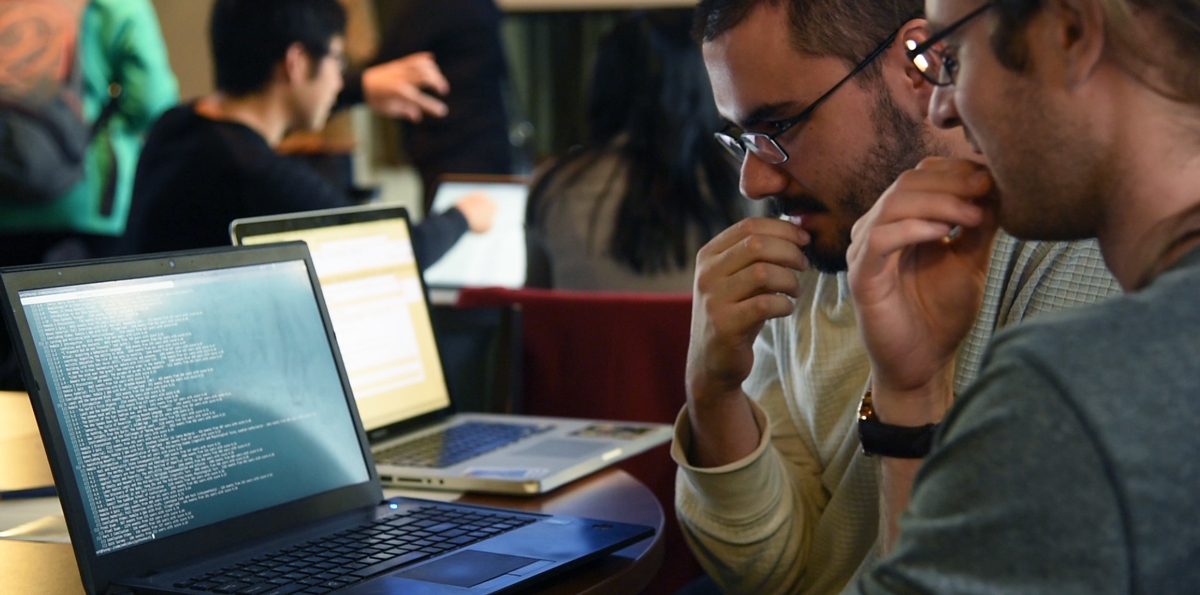In January 2017, the Institute for the Scholarship of Teaching and Learning and the Learning Analytics Visual Analytics group held Hackathon 2.0 at UBC. The two-day event brought together over 80 students, researchers, faculty and staff to explore educational data. Organizers welcomed participants with a range of expertise, and encouraged beginners to sign up to the event.
“My interest in having a hackathon was to bring people together who either want to learn more about doing data analysis, know about data analysis but want to bring into a new context, which is learning analytics, or don’t know anything about either of those things but are generally interested,” said Alison Myers, data analytics specialist at the UBC Sauder School of Business.
This year the hackathon began with a series of workshops on visual analytics, temporal data analysis and statistics using R, an open source software and programming language for statistical computing and graphics. The idea was to support participants in expanding their knowledge base and making first steps with their analyses.
Hackathon participants were given data from two UBC Massive Open Online Courses: one course focused on Chinese philosophy, the other focused on the science behind climate change. Data included event-trace data, student demographics, discussion-forum posts, attitude surveys, and summative data, enabling a broad range of analytical approaches. Participants formed groups depending on their expertise and interests.
“I have done research on learning data in the past. Patrick is doing computer science so he knows more about coding. And Vesta has experience with visual analytics,” explained Mario Cimet, a student studying Cognitive Systems at UBC, about his team.
The event was an opportunity for like-minded people to meet and share their passion for data analysis. The hackathon was also aimed at raising the profile and visibility of learning analytics. Learning research data can give instructors feedback about their teaching approaches and resources, and how they’re working in their classrooms. It can inform departments about why certain classes are more popular than others and thus support planning at the program level.
“Learning analytics is using evidence about learners to improve the process [of teaching],” said Cimet. “I think it’s important because any decision that you make that is going to deal with their education, you should do it with as much evidence as possible. You should do based on facts.”
